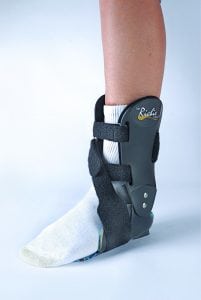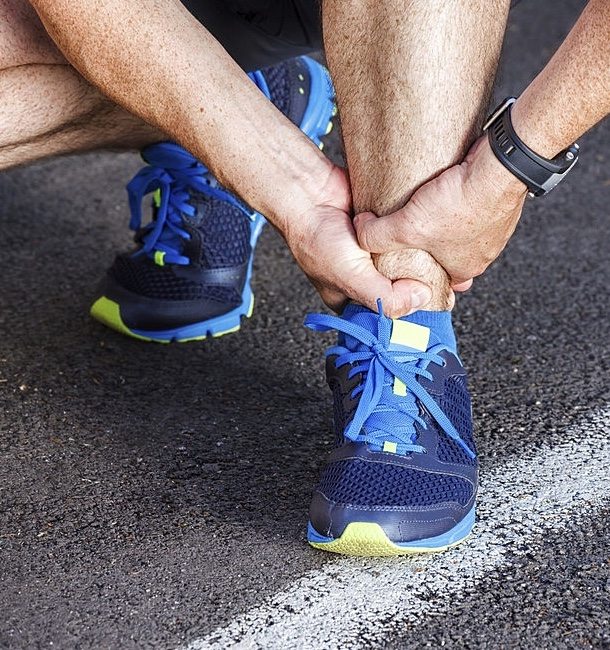Peroneal Tendonitis
Peroneal tendonitis is inflammation of the peroneal tendons in the foot. The Peroneal tendons are responsible for stabilising the foot and ankle in order to minimise the risk of sprains.
Peroneal tendonitis occurs when the peroneal tendons become inflamed. This happens when there is an increased load and overuse of the tendons, leading to them rubbing on the bone.
There are two peroneal tendons in each leg. They run side by side down the lower leg bone (fibula) and behind the bony lump on the outside of the ankle called the lateral malleolus.
One peroneal tendon attaches to the outside of the foot at the base of the little toe (fifth metatarsal). The other tendon goes underneath the foot and attaches to the inside of the arch.
The peroneal tendons provide stability to the ankle when it is bearing weight and protects it from sprains. They also help turn the foot out and stabilize the arch when walking.
Peroneal tendon injuries may be acute (occurring suddenly) or chronic (developing over a period of time). They most commonly occur in individuals who participate in sports that involve repetitive ankle motion. In addition, people with higher arches are at risk for developing peroneal tendon injuries. Basic types of peroneal tendon injuries are tendonitis, tears and subluxation.

Tendonitis is an inflammation of one or both tendons. The inflammation is caused by activities involving repetitive use of the tendon, overuse of the tendon or trauma (such as an ankle sprain).
Degenerative tears (tendonosis) are usually due to overuse and occur over long periods of time, often years. In degenerative tears, the tendon is like taffy that has been overstretched until it becomes thin and eventually frays. Having high arches also puts you at risk for developing a degenerative tear.
Subluxation means one or both tendons have slipped out of their normal position. Damage or injury to the tissues that stabilize the tendons (retinaculum) can lead to chronic tendon subluxation.
To diagnose a peroneal tendon injury, the surgeon will examine the foot and look for pain, instability, swelling, warmth and weakness on the outer side of the ankle. In addition, an x-ray or other advanced imaging studies may be needed to fully evaluate the injury. The foot and ankle surgeon will also look for signs of an ankle sprain and other related injuries that sometimes accompany a peroneal tendon injury. Proper diagnosis is important because prolonged discomfort after a simple sprain may be a sign of additional problems.

Treatment depends on the type of peroneal tendon injury. Options include:
- REST and Immobilization. A cast or CAM Walker may be used to immobilize the foot and allow the injury to heal.
- Oral and Topically applied Medications. Oral or topical drugs may help relieve pain and inflammation.
- Physical therapy. Ultrasound therapy, exercises, strapping and other physical therapy modalities may be prescribed to reduce symptoms.
- Injection therapy. Injections of a local anesthetic provide pain relief, and an injected corticosteroid may be useful in treating the inflammation.
- Orthotic devices. Custom shoe inserts may be prescribed to help maintain the arch and limit excessive motion that can cause compression of the nerve.
- Shoes. Supportive shoes may be recommended.
- Bracing. Patients with flatfoot or those with severe symptoms and nerve damage may be fitted with a special ankle brace (i.e. ‘triloc’ or the Richie brace) to reduce the amount of pressure on the foot.
- Surgery: In some cases, surgery may be needed to repair the tendon or tendons and perhaps the supporting structures of the foot. A foot and ankle surgeon will determine the most appropriate procedure for the patient’s condition and lifestyle. After surgery, physical therapy is an important part of rehabilitation.

The Richie Brace® is a revolutionary alternative to traditional ankle braces and ankle-foot orthoses (AFO’s). The lightweight construction and low profile design features of the Richie Brace allows better shoe fit, more freedom of movement and reduced pain from injury. TFAAC Podiatrists are highly trained and specialise in prescribing these revolutionary customs made braces. The Richie Brace has become a gold standard treatment in the orthotics industry. It is universally recognized by Podiatrists, Pedorthists, Orthotists and Orthopedic surgeons as a unique, breakthrough technology to treat a wide variety of foot and ankle pathologies such as foot drop, ankle arthritis, ankle sprains and many other ankle injuries.

At the Foot and Ankle Clinic our highly qualified team of Podiatrists are all members of the Australian Podiatry Association and offer a combined 50 years’ experience. They are trained to diagnose and effectively treat Peroneal Tendonitis via a range of effective treatments.
Put your feet in our hands! See us today in Chadstone, East Bentleigh, Moe, Sale, Traralgon, Warragul & Online Store and Retail Enquiries. NO REFERRAL NEEDED!.


